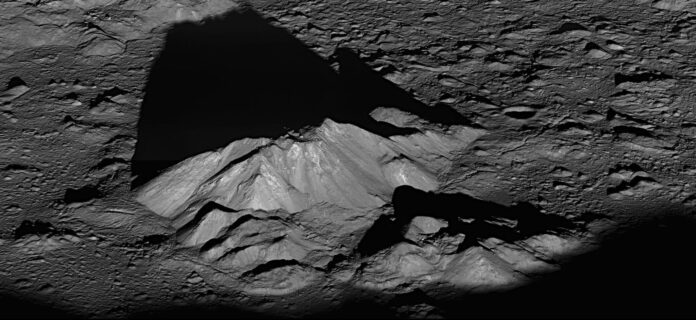
An Exploration of the Moon’s Mysteries: A Look at the Tycho Crater
If you gaze at the moon through a top-notch pair of binoculars or a telescope, your eye will likely soon fall on the Tycho Crater, situated near the south pole. This crater has a notable peak at its center – a central mountain.
The Tycho Crater spans a staggering 130 kilometers wide. It was formed around 110 million years ago, when an asteroid with a size between 5 to 10 kilometers impacted the lunar surface. This asteroid is theorized to be roughly equivalent in size to the one that signified the end of the era of dinosaurs 65 million years ago. Despite its age, in terms of solar system’s history this crater registers as a relative newcomer, considering that the solar system has been around for over four billion years. The crater owes its name to Tycho Brahe, a well-known Danish astronomer.
The Central Mountain and Its Surroundings
The central mountain within the crater rises 1.6 kilometers above the crater floor. Yet, the edge of the crater reaches a height of 4.7 kilometers. As a consequence, the mountain does not protrude above the crater rim.
In 2011, the Lunar Reconnaissance Orbiter captured a fantastic image of the immense mountain in the Tycho Crater. What makes this round of images even more remarkable is the second photo – a massive rock perched on the mountaintop. This boulder, with a diameter of 120 meters, could house a structure like the 112-meter Dom Tower, if it were to be laid on its side.
Tycho Crater’s Floor: A Study of Contrasts
Despite looking smooth and uniform, the floor of the Tycho Crater is, in fact, quite irregular. In 2010, scientists noted bumps on the crater floor that were created from the melted material and leftovers due to the meteoric impact. The Tycho Crater is impeccably preserved, in contrast to many craters on our own planet, scientists use photos and data from the Lunar Reconnaissance Orbiter to learn more about how craters are formed.
Did you know that moon still displays the formation of new craters to this day? The Lunar Reconnaissance Orbiter recently spotted a new dual crater that arose after a rocket component fell on the moon.











